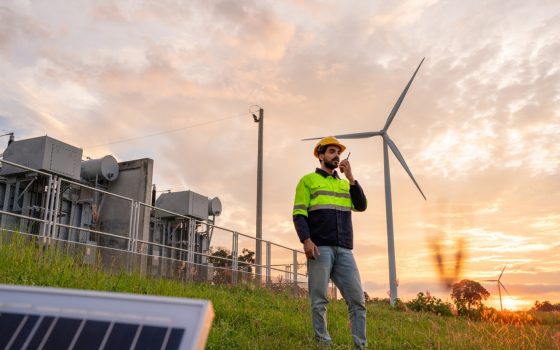Clean Growth Strategy must mobilise people as well as investment
The Government’s new tone is refreshingly positive, but there are still holes in its strategy.
13 October 2017
The best part of a year late, the Government this week finally published its Clean Growth Strategy. It’s pretty decent as far as it goes – but that’s nowhere near far enough.
This legally required tome – all 165 pages of it – sets out some of the ways ministers propose to get the UK back on track to meet our carbon budgets, which we’re in danger of overshooting. It doesn’t entirely do that, but its tone is refreshingly positive after years of blinkered mutterings from this and the previous Government about the supposed costs of ‘green crap’.
At a time when the US is doing all it can to scupper not just its own decarbonisation but that of the rest of the world, the UK is reassuringly clear that this has only hardened the world’s resolve to act. Trump sets about rekindling the US coal industry; the UK paints climate action and industrial success as going hand in hand.
And it is unambiguous on what the Government sees its main role in cutting emissions: creating ‘the best possible conditions for the private sector to innovate and invest’. It’s an industrial strategy plan first and foremost, and a pretty welcome one. The strategy is one giant come-hither to investors, whose outlook may have been understandably shaken by the economic uncertainty of Brexit, the whole ‘green crap’ thing, or both.
Some £2.5 billion will be targeted at supporting low-carbon innovation and the deployment of renewable energy over the next decade, and there is even a welcome partial retreat on the ideological assault on onshore wind. Coming the same day as draft legislation to cap energy bills – only four years after Ed Miliband’s plan to do the same was decried as Marxism – it’s worth a pause for breath to reflect on how fast politics can change.
But plenty is, sadly, missing. Crunchy detail is lacking on many of the knottier problems, such as how to properly clean up the heating of our homes and buildings, or powering transport. More details are promised soon. Other problems are more fundamental, manifesting not just here but across the government’s broader approach to many issues, such as industrial strategy.
The strategy has plenty of great stuff about offshore wind turbines, but far less about how people actually experience renewable energy.
In a new report for the TUC this month NEF argued that the Government has too narrow a definition of industrial strategy: all big investments and whizzy exports, rather than starting from the reality of what most people experience and need. Similarly, the Clean Growth Strategy has plenty of great stuff about offshore wind turbines into which international capital can pour, but far less about the broader, more everyday part of how people actually experience renewable energy.
What actually is the job of the Government of one of the richest countries in the world, facing an existential climate crisis? Surely, it’s not just to unlock big shiny investment, but rather to launch a genuinely transformative project that might really reach into people’s lives. This is the kind of approach that has underpinned the energy transitions of countries like Germany, where over 1,000 energy cooperatives make up the majority of the ownership of the country’s renewable energy. This makes their ‘Energiewende’ – Germany’s own clean transition plan – feel like a national project in which everyone has a stake, and is thus supported by 90% of the population.
In the UK, community energy has been one of the real casualties of the last few years of government policy. Schemes have struggled to make ends meet in the wake of swingeing budget cuts made all the more galling by the eyewateringly generous support lavished upon just one nuclear power station, Hinkley C. This is yet another iteration of such a ‘don’t sweat the small stuff’ strategy. But if you’re trying to help a whole society move in rapid order to a new path, which we certainly are, then strategies need to be built on far more than galumphing great private sector innovation alone. The ‘small stuff’ is where we all, ultimately, live.
The final thing missing is, well, all the stuff that’s missing. There’s some serious cognitive dissonance at work. The strategy is a canter through all the things the government is doing to get us off the fossil fuel hook. But, off-screen, it’s doing lots of things to keep us on that very same hook, like building new runways, slicing tax rates in a quest to drill every drop of North Sea oil, or pushing shale gas drilling on people that don’t want it. This latter is particularly stark given Scotland’s recent pledge to ban fracking entirely, leaving England isolated.
Unless this Jekyll and Hyde approach to cleaning up our game is taken head on – and government spends as much time inspiring people to come together to take action as it does in entreating foreign capital – then its aspirations for a whole country proudly leading on climate change may be only ever that: aspirational.
Topics Climate change Energy






